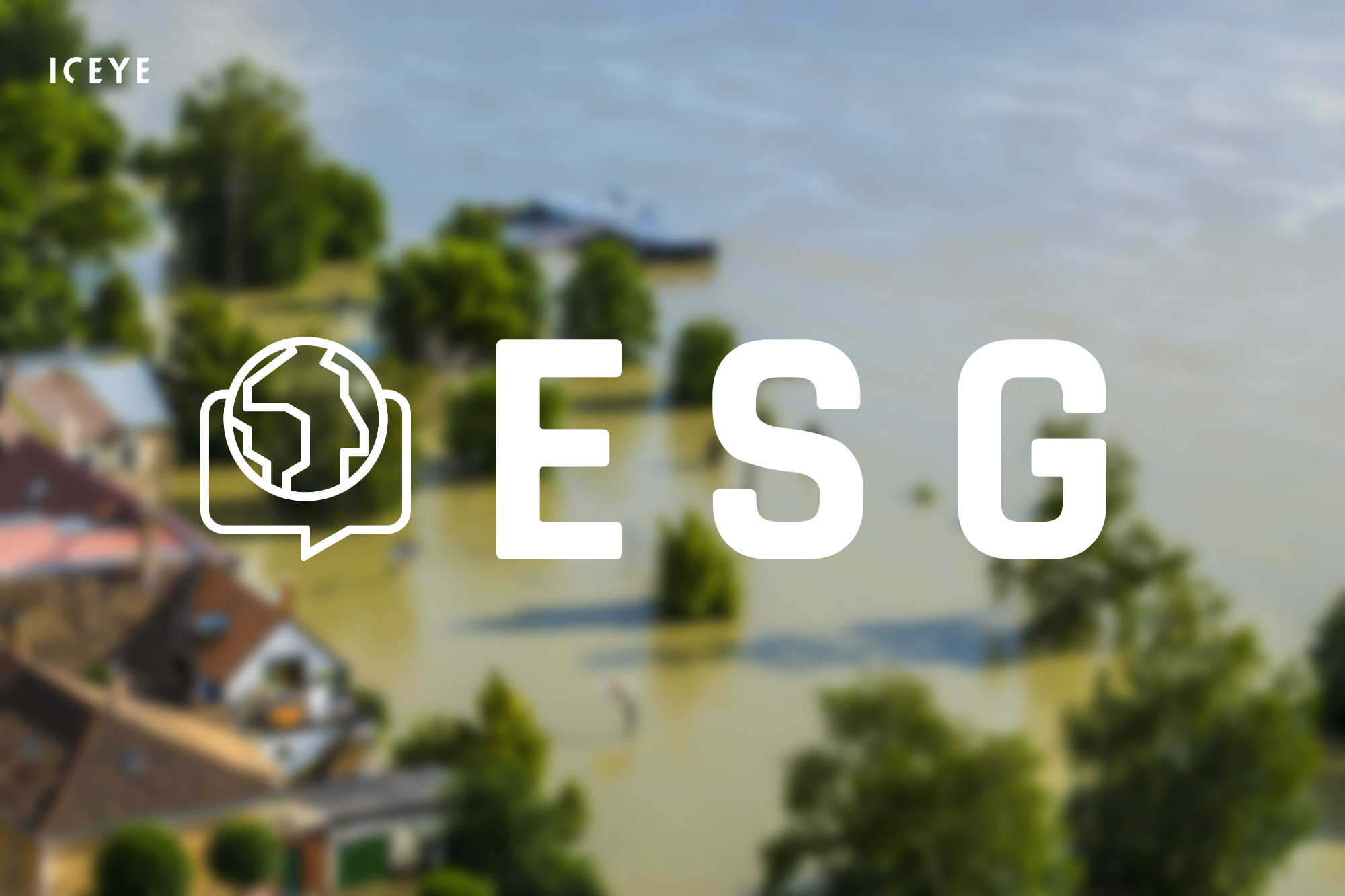Contact us
Get in touch with our experts to find out the possibilities daily truth data holds for your organization.
Persistent Monitoring
Natural catastrophe solutions
19 May 2022 | Solutions
6 min read
VP Marketing, ICEYE

Last year, global insured losses from natural catastrophes were $89 billion, the fifth-highest catastrophe toll on record, according to the latest numbers from Swiss Re sigma.
Secondary perils such as flood were once again a major driver of loss, accounting for 70% of all claims. Storm Bernd, which affected Germany and other countries in western/central Europe in July caused insurance losses of $13 billion (with total economic losses of $40 billion) - Europe's largest-ever single event loss.
Growing losses from floods are becoming ever more apparent. Together the public sector and re/insurers can steer development away from high-risk areas and investments into protective measures, such as green infrastructure.
Jérôme Jean Haegeli
Group Chief Economist, Swiss Re
The industry's role will continue to grow in importance as such weather extremes become more frequent. For assets to remain insurable, new approaches to risk management and insurance are essential.
At the same time, the industry must innovate to address the growing protection gap. Parametric coverages are among the alternative risk transfer solutions that can increase insurance take-up and act as a complement to traditional indemnity products. The industry can also leverage its data and analytics to help the most at-risk communities become more resilient.
Taking a lead on the climate transition is not just the right thing to do, it is part of a growing raft of environmental, social and governance (ESG) responsibilities the industry faces.
In April, it became mandatory in the UK for the largest companies and financial institutions to disclose climate-related financial information under the TCFD framework, while Amanda Blanc, the Group CEO of Aviva just named flooding as the biggest risk for the UK insurance market in one of her recent interviews.
Last year's COP26 meeting allowed the industry to showcase its expertise in catastrophe risk management and role as a provider of capital. It also offered important momentum and raised awareness of the dangers of 'greenwashing', with a recognition that industry commitments must be backed up by concrete action.
Industry stakeholders are scrutinizing how effectively carriers and intermediaries are:
For all of this to happen, access to fast, reliable and independent natural hazard data is needed. Applications of geospatial and earth observation sensor data from satellites and other integrated multi-sensory, multi-sources are expanding. Such data will enable re/insurers to continue absorbing peak catastrophe losses and deploy their resources and settle claims quickly post-loss.
Remote sensing will play a key role in building a more sustainable and resilient future. Swiss Re Institute estimates that at least 17% of the UN's 231 SDG (Sustainable Development Goals) indicators can immediately benefit either directly or indirectly from the use of earth observation data, for instance.
This is where ICEYE comes in. Our accurate, verifiable, near real-time flood insights and loss sizing capabilities are a game-changer, helping insurers develop new risk transfer products and reducing societal vulnerabilities. And year-end we are planning to add wildfire and Persistent Asset Monitoring (PAM) to our repertoire.
Currently, our unique flood insights are being used by a select group of insurance industry first-movers to develop scalable solutions designed to mitigate the impacts of climate change, such as parametric flood coverages that offer immediate payouts when triggered, or sizing flood losses better with accurate observation data.
And this is just the beginning. The road to net zero is a complex and precarious journey. Getting there will require nimble, innovative thinking, the right partners and superior data and analytics to counter emerging risks and unlock new opportunities.
Get your free eBook
The Art of the Possible for (Re)Insurers
28 October 2025
Flood Ready: How insurers can act faster with satellite insights
Discover how satellite flood monitoring helps insurers gain real-time situational awareness and...
Read more about Flood Ready: How insurers can act faster with satellite insights →15 October 2025
From forecast to fact: Multi-peril data for insurers
ICEYE's Monte Carlo workshop revealed how SAR satellite data transforms hurricane response and...
Read more about From forecast to fact: Multi-peril data for insurers →11 June 2025
6 Data-driven strategies emergency managers should use for hurricane preparedness
How Emergency Managers can ensure data readiness ahead of hurricane seasons.
Read more about 6 Data-driven strategies emergency managers should use for hurricane preparedness →